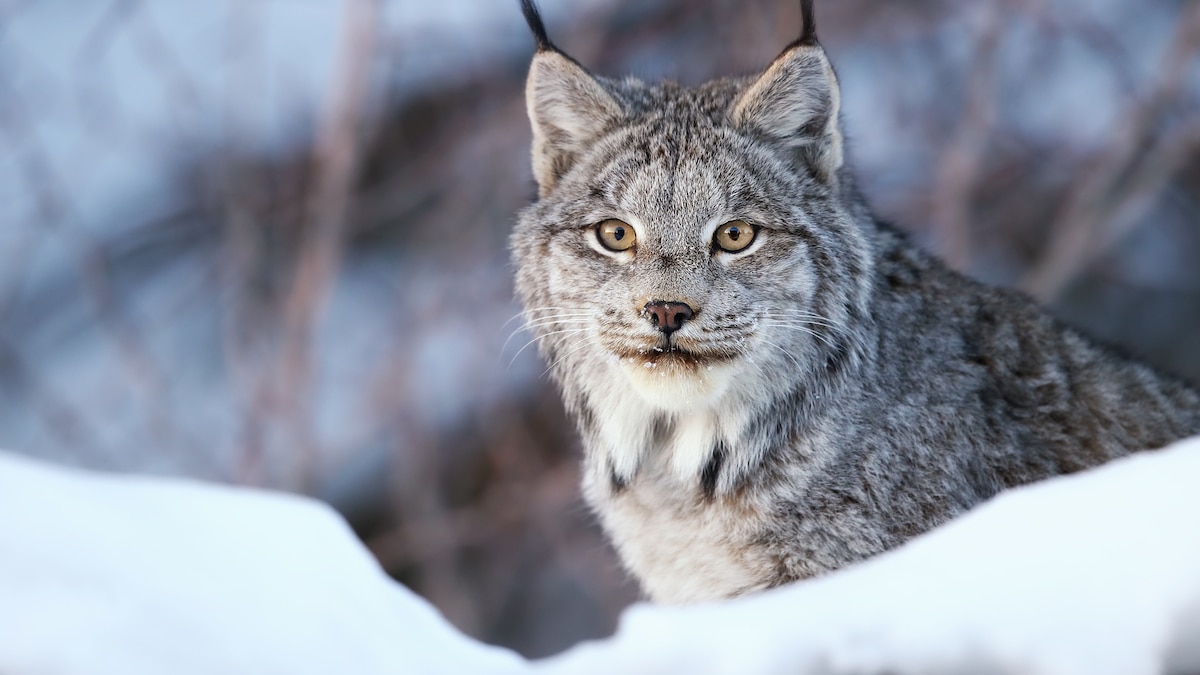

With snowshoe paws, dignified faces and ears tipped with black tufts of fur, the Canada lynx (Lynx canadensis) looks like a creature out of a fairy tale. Lynx bear similarities to bobcats, but bobcats have smaller feet and legs and shorter ear tufts, according to Defenders of Wildlife.
The Canada lynx inhabits the snowy, northern forested regions of Alaska, across Canada, and from the Northeastern U.S. to the Rocky Mountains, where several hundred of the elusive creatures are estimated to roam. Due to the loss of much of its original habitat, this beautiful animal has been pushed farther and farther into the last remaining wilderness.
This week, U.S. Fish and Wildlife Service (USFWS) officials agreed to create a new habitat plan for the Canada lynx, The Associated Press reported. The plan could include protected areas in Colorado and other states in the Western U.S.
Environmental groups Wild Earth Guardians and Wilderness Workshop sued the USFWS to enforce a previous court ruling that said that when federal officials had designated almost 40,000 square miles as critical habitat for the lynx in 2014, they wrongly excluded parts of Colorado, Montana and Idaho.
“There’s a lot of really good habitat in Colorado – wilderness and really remote areas,” said John Mellgen, attorney for the environmental groups, as reported by The Associated Press.
USFWS officials had previously concluded that Colorado and areas of Wyoming and New Mexico were “not essential” for Canada lynx recovery, partially because of low populations of snowshoe hares, The Associated Press reported.
The lynx lives almost entirely on a diet of snowshoe hare, which has a brown coat in the summer and a white coat in the winter, according to The National Wildlife Federation (NWF).
“The two species evolved together, the cat becoming a specialist in killing the hare, and the hare becoming adept at eluding the lynx. The lynx kills an average of one hare every two or three days. It will turn to killing grouse, rodents, and other animals if hares become scarce. The link between lynx and hare is so tight in the North that the two species’ populations fluctuate in almost perfect synchrony,” the NWF website stated.
The presence of a population of reproducing lynx in the southern Colorado Rocky Mountains was cited by U.S. District Judge Donald Christensen, who issued the order approving the settlement.
In order to comply with the order of Judge Christensen, the USFWS will evaluate and propose critical habitat for the Canada lynx for potential protections by November 21, 2024, a statement by agency spokesperson Joe Szuszwalak said, as The Associated Press reported.
Lynx were listed as “threatened” across the contiguous U.S. under the Endangered Species Act in 2000.
Wildlife officials must be consulted by federal agencies before any activities are taken that could destroy or alter land that has been designated as part of the critical habitat of a protected species like the Canada lynx. If necessary, the consultations can result in limiting recreational dirt roads or putting restrictions on logging in federal forests.
Lynx were recently reintroduced in Maine, Minnesota, Colorado and Washington, where they are exceptionally vulnerable, the Defenders of Wildlife website stated. Numbers of Canada lynx have declined due to habitat loss and fragmentation, as well as overtrapping.
Canada lynx were reintroduced in Colorado starting in the late 1990s and are occasionally also found in Michigan, reported The Associated Press.
Mellgren said that more pressure is being put on the remote areas lynx inhabit in Colorado as climate change increases the killing of trees by wildfires, beetles and other issues. Some scientists also caution that a warming planet could melt the lynx’s snowy habitat and result in the decrease of populations of snowshoe hares.
In 2016, federal government biologists said some lynx populations would be gone by 2100. According to the Endangered Species Coalition website:
Canada lynx are especially vulnerable to global warming. In order to maintain a competitive advantage over other predators, this species depends on high elevation habitat with cold, snowy winters… As their habitat shifts upward in elevation, current lynx populations will likely become more isolated. Thus, protecting habitat at higher elevations as well as important corridors linking those areas is just as critical as protecting current Canada lynx habitat in order to ensure the long-term survival of the species.

 233k
233k  41k
41k  Subscribe
Subscribe 